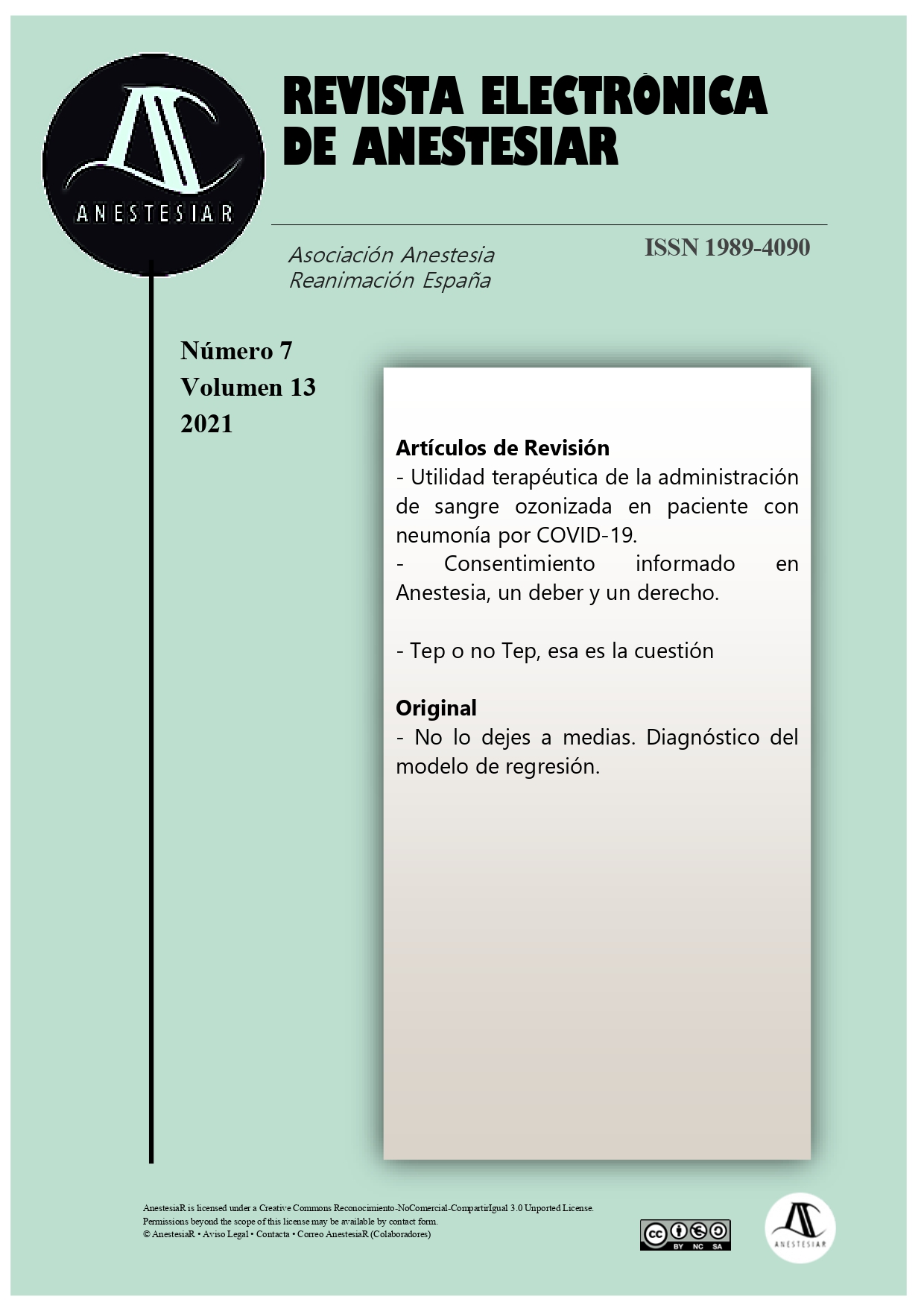PE or not PE, that is the question
DOI:
https://doi.org/10.30445/rear.v13i7.1008Keywords:
Pulmonary embolism, critical ill, ventricular dysfunction, anticoagulation, fibrynolisisAbstract
Just as Hamlet raised the duality of being at a critical momento, it is necessary to consider the possibility of having a pulmonary thromboembolism or not in each patient who may have some risk factors, since said pathology together with deep vein thrombosis supposes the 3rd most prevalent cardiovascular disease.
Given its nonspecific symptoms, its probability must be assessed in order to optimize the use of diagnostic tests. Furthermore, once confirmed, it will be necessary to stratify the risk of mortality for each patient to decide on the best long-term approach.
Due to this complexity in its evaluation, a review of it seems necessary, which has been carried out by consulting the books indicated in the References section, together with the search for review articles and systematic reviews on the UpToDate and PubMed platforms in the last 5 years in English and Spanish with the key words: pulmonary embolism, critical care, critical patient and anaesthesia.
References
Konstantinides SV, Meyer G, Becattini C, Bueno H, Geersing GJ, Harjola VP, et al. Guía ESC 2019 para el diagnóstico y tratamiento de la embolia pulmonar aguda. Rev Esp Cardiol. 2020; 73 (6): 497.e1 – 497.e58.
Marino PL, Galvagno Jr SM, et al. Tromboembolismo venoso. El manual de la UCI. 2ª ed. Barcelona: Wolters Kluwer; 2018: 57-63.
López-Reyes R, Oscullo G, Jiménez D, Cano I, García-Ortega A. Riesgo trombótico y COVID-19: revisión de la evidencia actual para una mejor aproximación diagnóstica y terapéutica. Arch Bronconeumol. 2021; 57 (S1): 55-64.
Committee for European Education in Anaesthesiology (CEEA). Respuestas de la circulación pulmonar y ventilación unipulmonar. Fisiología aplicada a la Anestesia. 3ª ed. Madrid: ERGON; 2014: 403-406.
Wang KL, Kao YT, Chang WT, Chang HY, Huang WC, Hsu PC, et al. Management of Venous Thromboembolisms: Part II. The Consensus for Pulmonary Embolism and Updates. Acta Cardiol Sin. 2020;36: 562-582.
Plasencia-Martínez JM, Carmona-Bayonas A, Calvo-Temprano D, Jiménez-Fonseca P. Valor pronóstico de la tomografía computarizada en la tromboembolia pulmonar aguda. Radiología. 2016; 58 (5): 391-403.
Ceresetto J. Fibrinolíticos en tromboembolismo de pulmón. Nuevas alternativas para una indicación controvertida. MEDICINA (Buenos Aires) 2018; 78: 265-271.
Theroux CD, Aliotta JM, Mullin CJ. High-Risk Pulmonary Embolism: Current Evidence-Based Practices. R I Med J (2013). 2019 Dec 2;102(10):43-47.
Barash PG, Cullen BF, Stoelting RK, Cahalan MK, Stock MC, Ortega R et al. Traumatismo y quemaduras. Anestesia Clínica. 8ª ed. Barcelona: Wolters Kluwer; 2018: 1531.
Kolte D, Parikh SA, Piazza G, Shishehbor MH, Beckman JA, White CJ, Jaff MR, Iribarne A, Nguyen TC, Froehlich JB, Rosenfield K, Aronow HD; ACC Peripheral Vascular Disease Council. Vascular Teams in Peripheral Vascular Disease. J Am Coll Cardiol. 2019 May 21;73(19):2477-2486.
Downloads
Published
How to Cite
Issue
Section
License
Copyright (c) 2021 Revista Electrónica AnestesiaR

This work is licensed under a Creative Commons Attribution-ShareAlike 4.0 International License.
 Envío y derechos de autor
Envío y derechos de autor


 Revista Electrónica AnestesiaR by
Revista Electrónica AnestesiaR by 